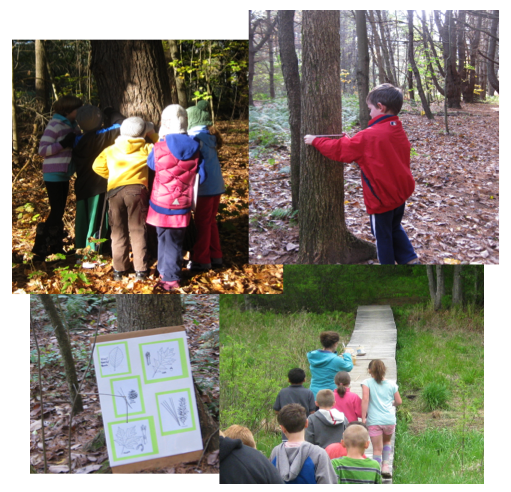Bringing Climate
Concepts to
Elementary Students

Although our tools and resources are geared
toward upper-middle, high school, and undergraduate students,
it is important to introduce elementary students to tools for
understanding climate change and the scientific process. Below are ideas to
give elementary students authentic, hands-on science
experiences.
1. Use a Temperature Experiment to explore how different colored objects reflect and absorb light. Measure the difference in temperature between a white piece of paper and a black piece of paper when both are placed under the same lamp. See attached sheet for experimental procedure. This gives the students the basis for understanding energy balance and albedo (reflectance), important concepts in climate change.
Temperature
Experiment Teacher Guide ![]()
Temperature
Experiment Handout (Gr. 1-3) ![]()
2. Use Picture Post images to explore changes in seasons. What do students notice about the cycle of the seasons when looking at a series of Picture Post images? What features in the image change over the seasons, what remain the same? Use images from the Picture Post website, set up a Picture Post in the schoolyard, or take a picture out the window each week to see what details they notice. Track when the leaves emerge and fall off the trees, or join a citizen science network such as Project Budburst and share your observations with a wider community.
3. For upper elementary, show students climate maps and animations from the Student Climate Data website. What areas of the earth have similar climate? Different climate? Where do they see the greatest change in climate?
4.
Take students on a Nature Walk/ Habitat Hike. Take students
outside, either in their schoolyard, or a local park. Use measuring tapes
(or rulers and string) to measure tree circumference: what is
the largest tree they can find? Use leaf shape to identify
basic tree species. Use a spoon to dig up a *small* amount of
soil: What is the texture? What is the soil color? Discuss
what animals might live in this area: Where/how could they
find food, water, and shelter? Record the weather: what are
the sky conditions? What is the temperature? Is the
temperature different in the sun and the shade?
5.
EPA has a great website for
students to learn about and explore climate change.
EPA Climate Change Website for Students
6.
Practice using
scientific tools and taking accurate measurements.
Develop mini experiments, where students make a prediction,
and then use a science tool to collect data. For example, in
grades K-2, teach students how to read a thermometer and
measure the temperature of warm vs. cold water, sun vs. shade,
or inside vs. outside.
7.
Collect weather data
at your school, and keep a record on a poster in the
classroom. Observe
patterns and trends over time.
8. Elementary GLOBE includes stories and learning activities focused on Earth Systems, Clouds, Soils, Seasons, and Water.
